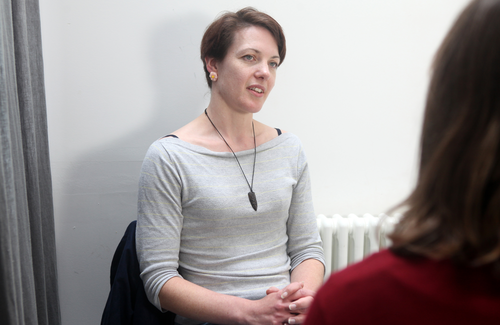
People living with HIV and their partners have a variety of concerns around interruptions of treatment required by cure studies. Concerns around health, transmission, finance, stigma and inclusivity were highlighted as potential barriers to engagement in trials that require an interruption of antiretroviral therapy (ART).
The journey toward a cure has been shaped by the ever-changing scientific and sociological attitudes toward HIV. In today's context those fortunate enough to access ART can achieve undetectable viral loads and a long, healthy life, so participating in cure trials incurs personal cost with less clear benefits for participants and their partners.
Many cure trials require an analytical treatment interruption (ATI). Such trials ascertain whether an intervention – often in the form of a medication or injectable treatment – can prevent or at least delay viral replication in people living with HIV. ATIs are supervised pauses in ART. Without an ATI there is no way of knowing whether it is the experimental intervention or ART that is inhibiting viral production. People undergoing an ATI usually have their blood tested frequently to look for evidence of viral rebound. This viral rebound could put their HIV-negative partners at risk of HIV acquisition, yet little research has been conducted into partners’ views on how this research may impact them.
Methods
Dr Karine Dubé and colleagues aimed to explore the perceptions of people with HIV and their sexual partners of enrolling in trials that involve an ATI. The team wanted to recruit an ethnic and gender diverse group of participants to reflect those most affected by HIV in the US. Recruitment flyers were sent to HIV community-based organisations across the US which serve racial, ethnic, sexual and gender minorities.
All participants were adults in a known HIV sero-different partnership. The definition of a couple was intentionally kept loose, defined as two individuals either romantically or sexually involved. Couples were interviewed together over encrypted video chat.
Ten couples participated. Most were male same-sex couples, with two heterosexual couples taking part. Participants included one transgender woman, one non-binary person and one gender non-conforming male. Seven participants were African American, six were Latinx and seven were White. The age of participants ranged from 36 to 73 years, with couples living in California, New York, Maryland and North Carolina.
For and against participation
Participants were asked about the factors involved in a decision to participate in cure research. Unsurprisingly the impact on a participant’s health was widely discussed by both those with and without HIV, with partners expressing a need for assurances that it would be safe for their partner to take part.
“Because I’d worry that it wasn’t going to work and that I would start losing the gains that I’ve made, as far as health-wise. A study is a risk, and I would have to weigh the risk of being in a study, because I’m healthy now…I don’t want to narrow my treatment options, if a cure was not effective.” – Couple 10, partner with HIV – cisgender male, 62 years old, White, diagnosed 1983
“Would there be any side effects for her health, make her weaker, trouble walking? Her viral load to go up and down and get sicker? ... I care about her health, make sure she takes her medicine and stuff. It's not really about the sex. It's the companionship that we have together.” – Couple 5, partner without HIV – cisgender male, 62 years old, White
Reassurance that HIV-negative partners would have a degree of protection was a key condition of engagement. Some highlighted that PrEP should be available as part of the trial.
“I would absolutely need to know that my partner is still going to be protected… That would be non-negotiable for me... And then yeah, I think just having a lot of clarity on exactly how long the interruption is going to be for me, just how I’m going to be monitored through all of that, real clarity on the risks.” – Couple 6, partner with HIV – cisgender male, 43 years old, White, diagnosed 2008
Receiving adequate compensation in exchange for the time commitment of study participation was important for many interviewees. In addition, they described how they would need reassurance they would have appropriate resources to tackle any ill-health as a result of engaging in the trial.
“And just to ensure that if something was to happen that home would be taken care of or that if there was a repercussion from taking a medication that I had ongoing insurance… yes, you have Medicare and Medicaid but sometimes there’s still co-pays and out-of-pocket expenses to go along with that. And just well compensated and that if something went wrong I would be accommodated.” – Couple 1, partner with HIV – cisgender female, 51 years old, African American, diagnosed 1991
Participants needed to be assured that the trial was scientifically rigorous and that any intervention would be accessible to all who need it:
“The main motivator would be if I really believed in the approach being taken by the researchers, if I trusted the researchers enough to go through that. And to want to contribute to a discovery that would benefit people around the globe....show me your plan to get it to people in sub-Saharan Africa.” – Couple 6, partner with HIV – cisgender male, 43 years old, White, diagnosed 2008
Stigma
An ATI would likely lead to a viral rebound and thus a loss of undetectable status. Stigmatisation of those with detectable viral loads, especially in gay sexual spaces, was highlighted by both those with and without HIV.
“Anybody being HIV has very little stigma to it nowadays, but if somebody were suddenly to have conversations around being off their meds, it’s more a responsibility stigma; …this feeling of well, you were suddenly being more cavalier with your health and things..it’s more about being separated from this community of people who can play freely…Because there is a lot of community around the sexual freedoms that PrEP and good HIV management have given us. And without those protections in place, you suddenly can feel very separated from that community.” – Couple 8, partner without HIV – cisgender male, 37 years old, Latino
“And I think we’ve not done as good of a job in recent years de-stigmatising people living with HIV who have a detectable viral load, so I do think even for myself that to willingly head toward being detectable again might reignite some of that internalised stigma that I have.” – Couple 6, partner without HIV – cisgender male, 37 years old, African American
Though perhaps meaning well, one partner without HIV seemed to stigmatise potential trial participants with language that conjures images of prisoners being released to wreak havoc on their sexual networks:
“You are releasing a person who is no longer on medication into a population, when they are most likely having regular sexual intercourse with one or more partners. And just making sure that there is a very specific language around – maybe even a retaining of how to engage with people, with those kind of conversations..and the possible risk for other partners. And them maybe monitoring their mindset around these conversations before even entering the study. If you have somebody who doesn’t really have much regard for their partners going into the study, they might not be a good candidate…” – Couple 8, partner without HIV – cisgender male, 37 years old, Latino
Diversity & inclusivity
When asked what could be done to facilitate recruitment of diverse people with HIV, interviewees mentioned developing diverse messages that are appropriate to different groups as well as having research staff that reflect the diverse groups who would be recruited into potential studies.
“And the reality is that where we’ve seen success is when it’s Black researchers who are delivering interventions to Black community members….and not just as your recruiters. Like people who are your co-investigators in the trials so that they’re making real decisions.” – Couple 6, partner with HIV – cisgender male, 43 years old, White, diagnosed 2008
Thinking about which ‘partners’ researchers need to engage with, the assumption of heteronormative relationship standards was challenged:
“I would really love to have studies and questions that maybe have more space for non-monogamous couples or that have space for maybe different than standard sexual practices that are a little bit more in line with that may be happening in the community at-large right now, that may not have made it back to scientific circles” – Couple 8, partner without HIV – cisgender male, 37 years old, Latino
Implications
Dubé and colleagues have highlighted the views of potential participants in cure research and for the first time, their partners. Easily understandable are concerns around scientific rigour, desire for appropriate compensation and the reassurance that health be protected. More nebulous issues for research teams to overcome are fears of becoming re-stigmatised through detectable viral loads and how this would limit sexual freedoms.
The importance of diversity within research teams was highlighted, perhaps in part due to Dubé’s intention to capture the views of the minorities who have been under-represented in HIV research to date. This same technique of actively reaching out to minority groups is vital in ensuring that cure trials recruit, retain and apply to all people living with HIV.
Cure trial clinicians need to plan studies that have adequate safety nets for the participants involved but also their partners, as without such measures potential participants may lack the necessary support of their partners. On a larger scale, communities affected by HIV should challenge negative perceptions of those with detectable viral loads if only because analytical treatment interruptions will be crucial in validating the success of a future cure strategy.
Dubé K et al. “I Would Absolutely Need to Know That My Partner Is Still Going to be Protected”: Perceptions of HIV Cure-Related Research Among Diverse HIV Serodifferent Couples in the United States. AIDS Research and Human Retroviruses, online ahead of print, 8 September 2022.

